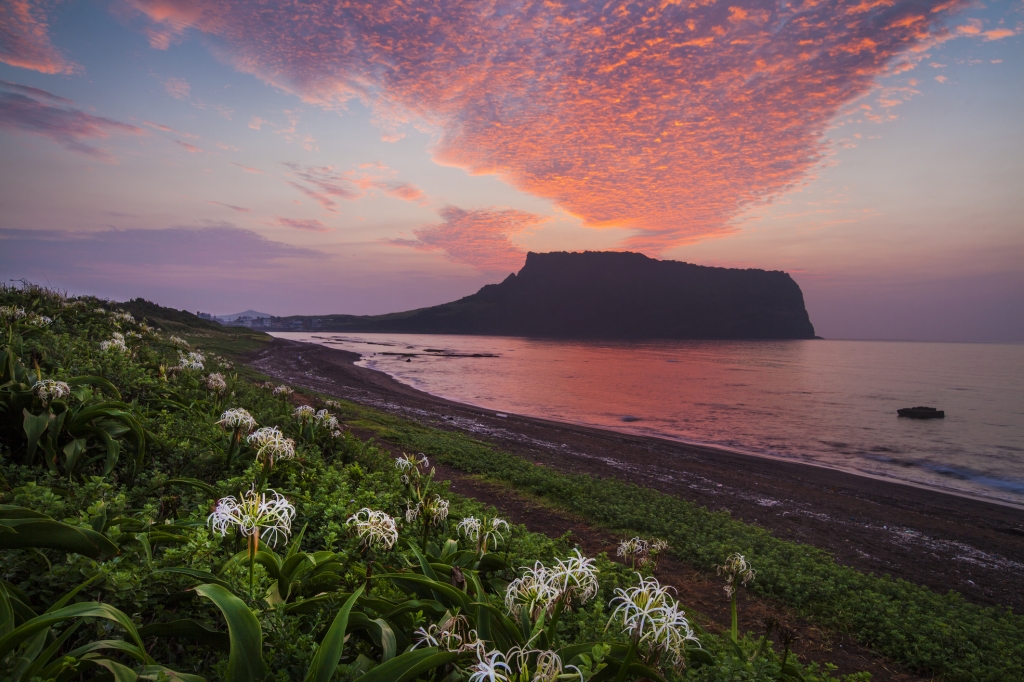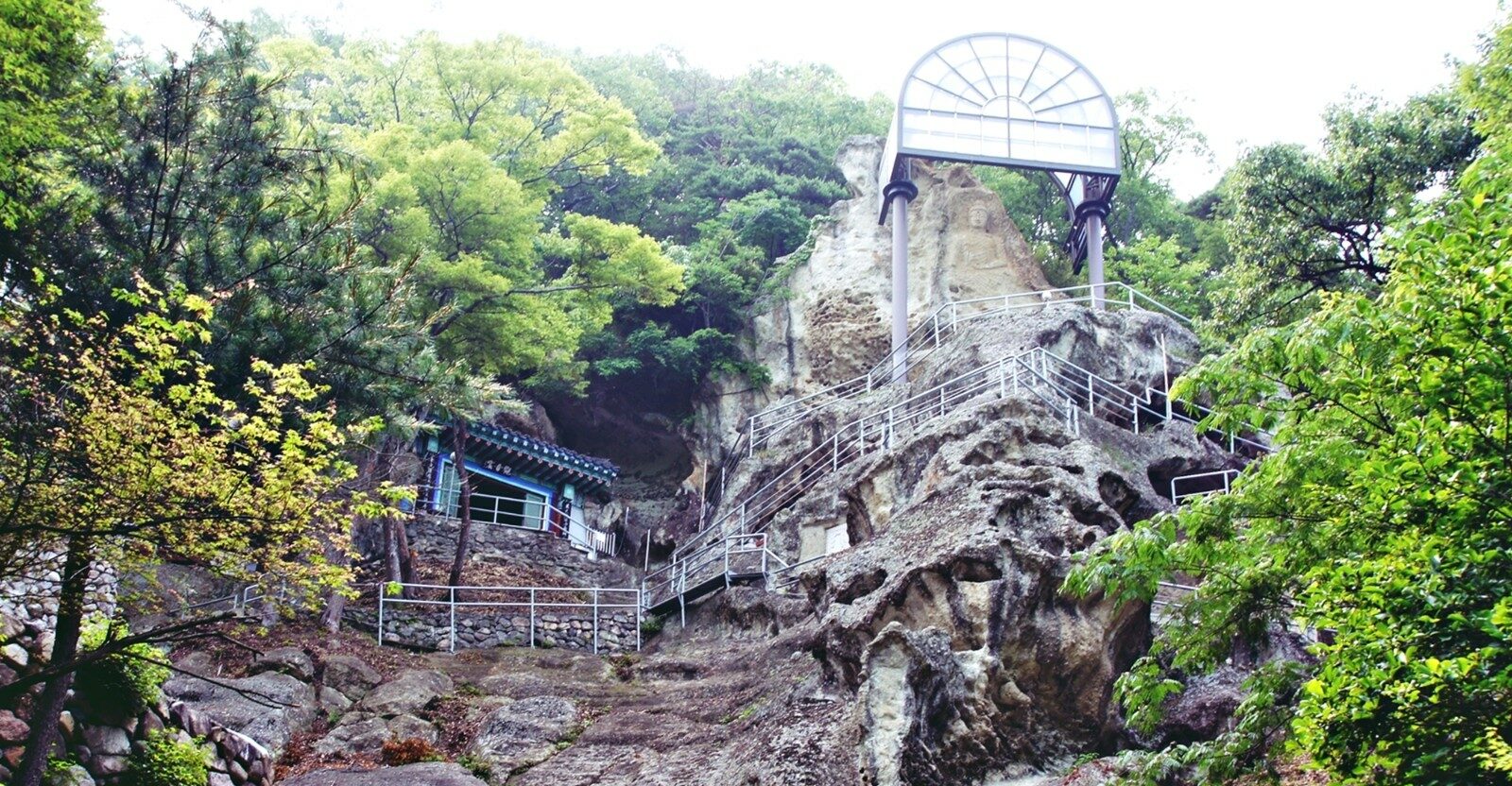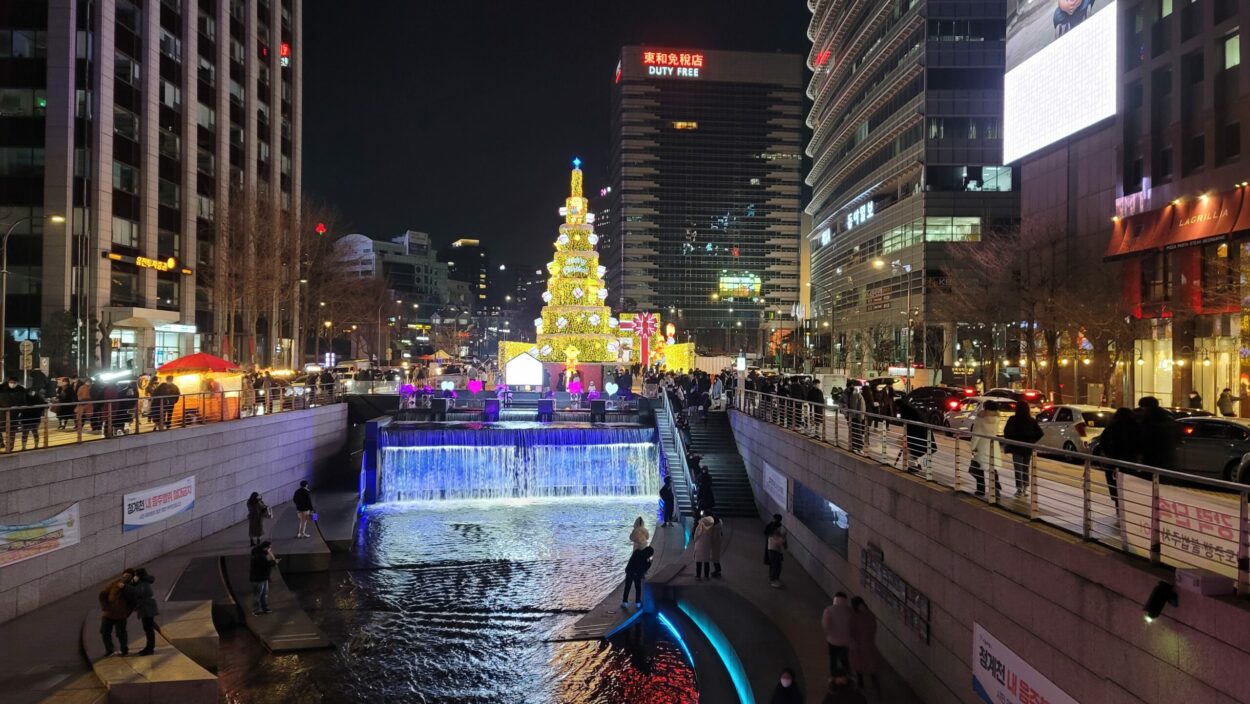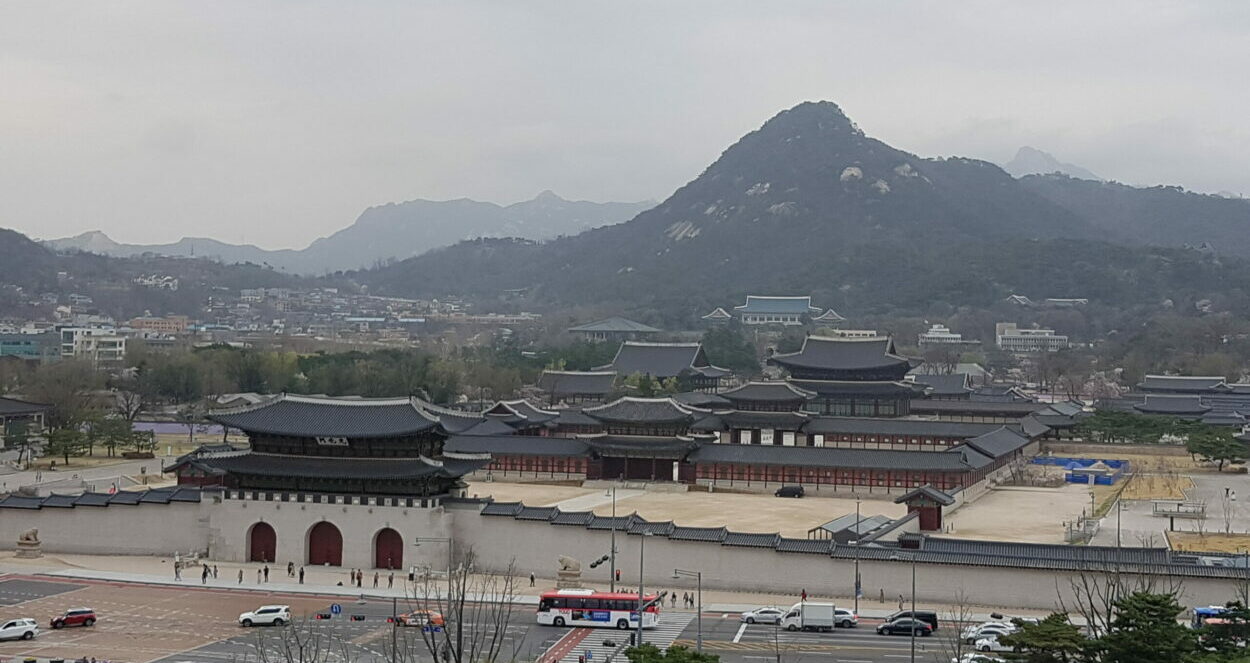Jeju Island, known as “Korea’s Hawaii,” captivates travelers with its stunning landscapes and rich cultural heritage. Recognized as a special tourist zone, Jeju welcomes about 8.7 million visitors each year, eager to explore its expansive beauty and diverse ecosystems. Stretching 73 kilometers from east to west and 31 kilometers from north to south, Jeju Island is approximately three times the size of Singapore, marking it as a geographical marvel.
How to Get to Jeju Island from Within Korea
Traveling to Jeju Island from other parts of South Korea is straightforward and convenient. Here are the most common ways to reach this enchanting island:
- By Air: The fastest and most popular method is by flying. Numerous daily flights operate from major cities such as Seoul (Gimpo Airport), Busan (Gimhae Airport), and Daegu to Jeju International Airport. The flight duration is typically around one hour, making it a quick and efficient option.
- By Ferry: For those preferring a maritime journey, ferries are available from several coastal cities, including Busan, Mokpo, and Wando. Ferry travel offers a scenic route, although it takes several hours longer than flying. It’s an excellent option for those who enjoy sea travel and wish to experience a different perspective of the Korean coastline.
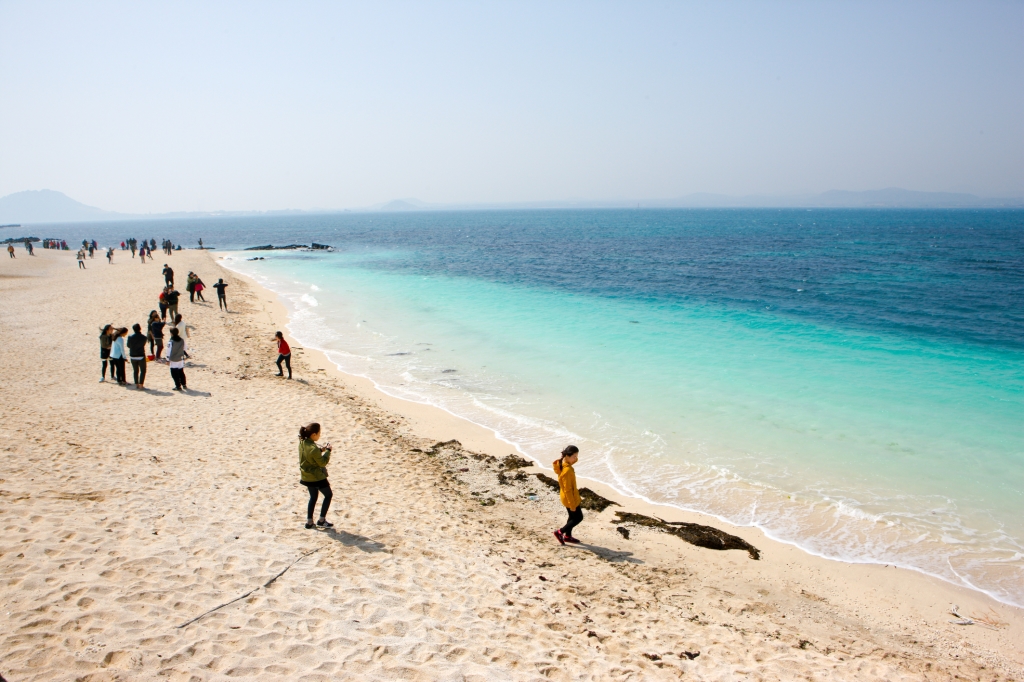
UNESCO Triple Crown
Jeju Island’s prestigious UNESCO triple crown status sets it apart, celebrated as a World Natural Heritage site, a Global Geopark, and a Biosphere Reserve. This extraordinary recognition underscores the island’s remarkable geological features and biodiversity. Jeju’s volcanic landscape features Hallasan, South Korea’s highest peak, and the world-renowned Manjanggul Lava Tube. Visitors can also hike to Seongsan Ilchulbong Tuff Cone, a magnificent crater offering awe-inspiring sunrise views over the ocean.
Distinctive Climate and Flora
Unlike mainland Korea’s temperate climate, Jeju boasts a subtropical climate, which fosters a diverse array of plant species unique to the island. This rich biodiversity enhances Jeju’s beauty and provides a wildlife sanctuary, perfect for nature lovers.
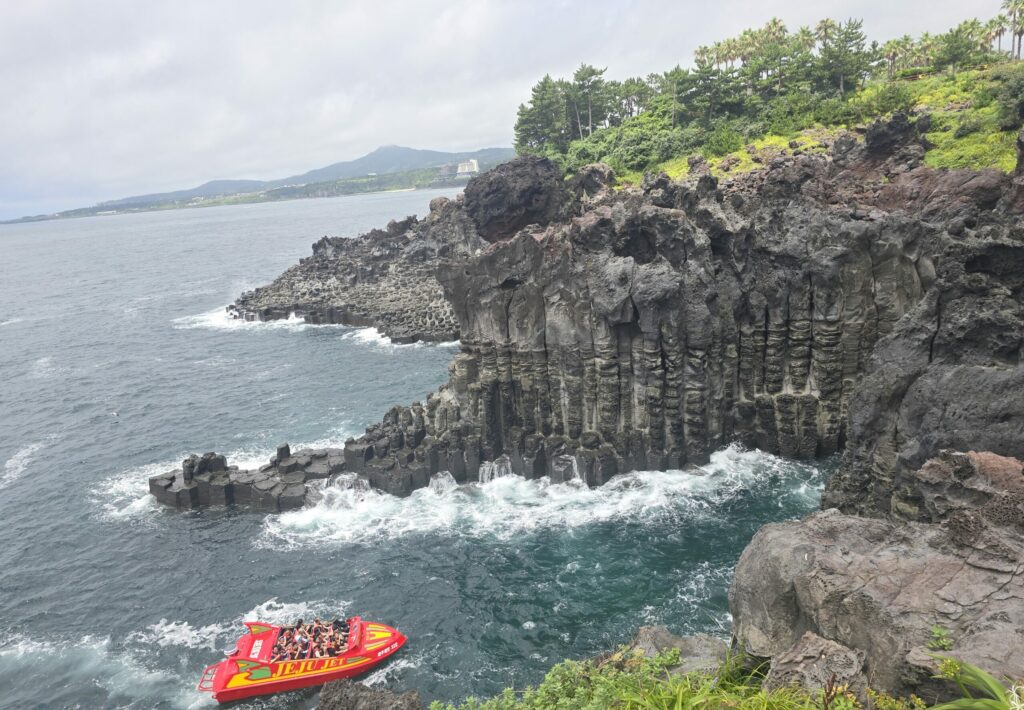
Must-Visit Attractions
- Hallasan National Park: Dominated by Hallasan Mountain, this park offers numerous hiking trails leading to stunning summit views. Rich in diverse flora and fauna, it’s a paradise for nature enthusiasts.
- Manjanggul Lava Tube: Experience one of the world’s longest lava tubes, known for its impressive rock formations. With a constant year-round temperature, it’s a comfortable exploration regardless of the season.
- Seongsan Ilchulbong Tuff Cone: Climb this iconic peak to witness one of Korea’s most beautiful sunrises. The crater’s unique geological features testify to Jeju’s volcanic past, offering panoramic views.
Nearby Travel Spots
Even with its own wealth of attractions, Jeju Island is complemented by nearby spots that enhance any travel itinerary:
- Udo Island: A short ferry ride away, Udo Island features pristine beaches and scenic bike paths. Known for its peanut ice cream, it offers beautiful coastal views.
- Cheonjeyeon Falls: Dubbed “The Pond of Heaven,” this three-tiered waterfall is surrounded by lush greenery, perfect for photography and nature appreciation.
- O’sulloc Tea Museum: A haven for tea lovers, this museum presents Korea’s traditional tea culture and offers tastings of green teas along with delightful green tea desserts.
Jeju Island is celebrated not only for its breathtaking landscapes but also for its vibrant culinary scene, especially its seafood offerings. Here are some must-try dishes that highlight the island’s distinctive flavors:
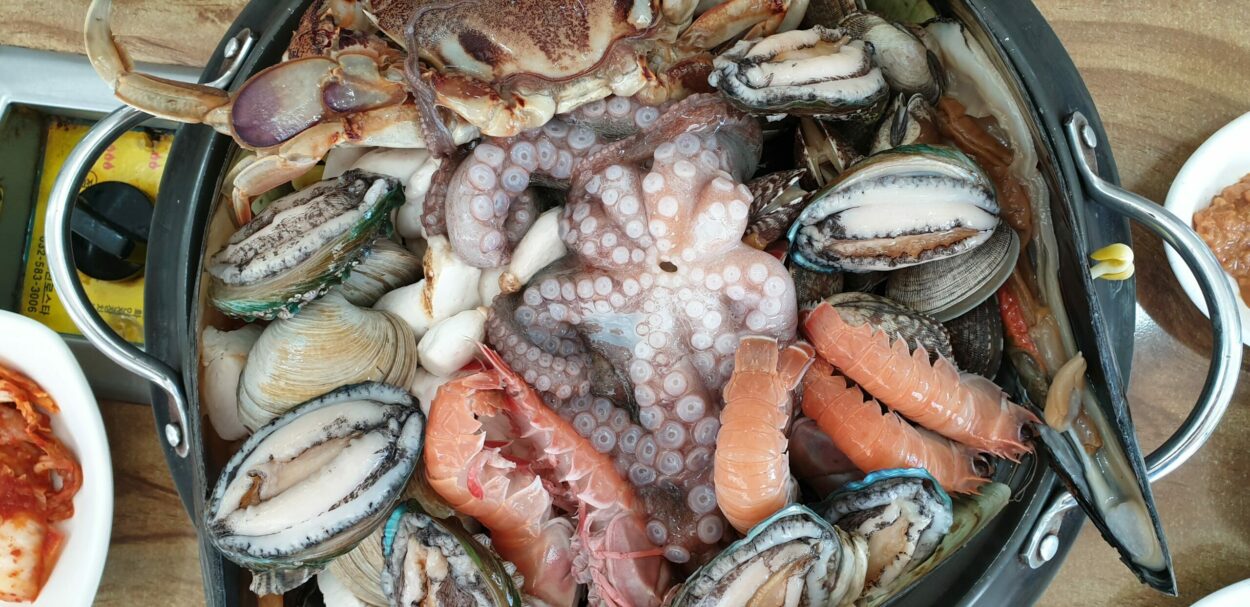
Must-Try Foods in Jeju Island
- Galchi Jorim (Braised Cutlassfish): This signature dish features cutlassfish braised in a spicy sauce with gochujang, soy sauce, and garlic. Served with steamed rice, it’s a local favorite.
- Okdom Gui (Grilled Tilefish): Known as “okdom,” this sweet white fish is salted and grilled, often accompanied by banchan, reflecting traditional Korean meals.
- Mulhoe (Cold Seafood Soup): A refreshing cold soup with raw seafood and vegetables in a tangy broth, perfect for warm days and a must-try for seafood enthusiasts.
- Gogiguksu (Pork Noodle Soup): Hearty noodle soup with yellow noodles in a savory pork broth, seasoned with spring onions and red pepper flakes, reflecting Jeju’s culinary traditions.
- Omegi Tteok (Rice Cakes): These glutinous millet rice cakes, filled with sweet red bean paste, are unique to Jeju and perfect as snacks or souvenirs.
- Muneo Sukhoe (Parboiled Octopus): Tender parboiled octopus served with spicy dipping sauce, offering a taste of Jeju’s fresh seafood.
Jeju Island is more than just a destination; it’s an experience that blends natural wonders with cultural richness. Whether hiking through its national parks or relaxing on its beautiful beaches, Jeju promises unforgettable memories for every traveler.

